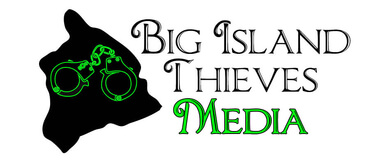The American Rescue Plan passed the Senate on March 6, 2021, and it is expected to easily pass the House of Representatives and be signed into law by the president in the coming days. This legislation includes a new round of Direct Payments to eligible recipients
DIRECT PAYMENTS
The American Rescue Plan provides a new round of one-time direct payments, or “recovery rebates,” to eligible individuals and families. The federal government will send you a payment if:
- You meet the eligibility criteria (below), and
- You filed a 2020 or 2019 tax return; you already receive Social Security benefits, SSI benefits, VA benefits, or Railroad Retirement benefits; OR you successfully registered for a prior round of direct payments online at IRS.gov using the agency’s non-filer tool.
If you meet both these criteria, no action is required to receive your payment.
Taxpayers will now also receive payments for all dependents with a Social Security Number, including both children and non-child dependents. In the case of a dependent who is adopted or placed for adoption, adoption taxpayer identification numbers are valid.
Who is eligible?
- Generally, if you are a U.S. citizen or resident alien, and you are not claimed as a dependent on someone else’s income tax return, you are eligible to receive a payment if you fall within the relevant income thresholds.
- If you file your taxes as an individual and your annual income is $75,000 or less, you are eligible for a full payment of $1,400. If you earn between $75,000 and $80,000, you are eligible for a reduced payment.
o For married couples who file joint returns, you are eligible for a full payment of $2,800 if your joint annual income is $150,000 or less. If you earn between $150,000 and $160,000, you are eligible for a reduced payment. These amounts will differ if you have children and/or adult dependents; see below for more details.
o If you are a single parent or caretaker and you file as a head of household, you are eligible for a full payment if your annual income is $112,500 or less, and a reduced payment if you earn between $112,500 and $120,000. Your payment amount will depend on how many dependents you have.
- If the credit amount determined by your 2021 tax return exceeds the payment amount you received (which will be based on your 2020 or 2019 tax return), you can claim the difference on your 2021 tax return. If, on the other hand, you receive a larger payment than the maximum credit allowed based on your 2021 tax return information, you will not be required to repay any amount.
- In general, taxpayers without an eligible Social Security Number are not eligible for the payment. However, married taxpayers filing jointly where one spouse has a Social Security Number and one spouse does not are eligible for a payment of $1,400, in addition to $1,400 per dependent with a Social Security Number.
o For eligible households in which at least one spouse is a member of the U.S. Armed Forces (and at least one spouse includes their Social Security Number on the tax return), the couple may receive up to the full $2,800.
Amount of payment
- The payment is $1,400 per eligible family member: $1,400 per taxpayer ($2,800 for married couples filing jointly), and an additional $1,400 per dependent, including both children and non-child dependents. An eligible family of four will receive up to $5,600.
- Payments start to phase out for those with incomes exceeding $75,000 for singles; $150,000 for married couples; and $112,500 for single head-of-household filers. Your income is based on your 2020 or 2019 tax return, whichever is the latest on file with the IRS.
- If your income exceeds the phase-out threshold, your credit amount will be reduced proportional to your income in excess of the phase-out threshold, divided by $5,000 (individual), $10,000 (married couple), or $7,500 (single head-of-household). So, if you are a single filer earning $78,000: $1,400 * (1-(($78,000-$75,000)/$5,000)) = $560
- No payments will go to: single filers earning more than $80,000; joint filers earning more than $160,000; and single head-of-household filers earning more than $120,000.
How will I receive my payment?
- If you have direct deposit information on file with the IRS, you will receive the payment that way. If not, you will receive the payment in the mail as a check or debit card sent to the address provided on your 2020 or 2019 tax return, whichever is the latest on file with the IRS.
- If you are eligible for a direct payment and you filed a tax return for 2020 or 2019, you will receive this payment automatically.
- If you are a Social Security Old-Age, Survivors, and Disability Insurance beneficiary, Supplemental Security Income recipient, Railroad Retirement beneficiary, or Veterans Administration beneficiary, you will receive this payment automatically. If you did not file a 2020 or 2019 tax return but you receive any of these benefits, you will receive the payment the same way you normally receive your benefits.
- If you applied through the non-filer portal for a prior round of direct payments and received a payment, you will receive this payment automatically.
- If you are eligible to receive a direct payment, the Treasury Department will send notice by mail to your last known address as soon as practicable. The notice will indicate the method by which the payment was made, the amount of the payment, and a phone number for a point of contact at the IRS to report any failure to receive your payment.
For more information, please regularly check the IRS’s portal for updated Frequently Asked Questions, payment status, and other information as it becomes available.



